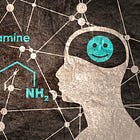The Motivational Paradox
Optimal motivation is more important than high motivation
We may think that high motivation is a good thing, and it is. But there are a number of paradoxes such as how motivation can lower ability, increase stress, and lose broad focus, and be difficult to manage.
If you speak to any business or team leader, they would almost certainly say they are motivated and would expect, and want to hire motivated team members, or employees. Who wouldn’t want motivated employees?
In fact, a few years ago in a small experiment a company, in Greece if I remember correctly, decided to use EEG scans of the brain to identify passion for the company in recruits!
That approach is misplaced for many reasons, and worried most of us in neuroleadership because of the massive limitations of the technology and how this could be interpreted – not to say manipulated.
But bad thinking around motivation or passion aside motivation is obviously a good thing to have. Who wouldn’t want to have motivated and engaged people to work with or working for you? In fact, in many areas of life motivation is the key to success – talent without motivation means nothing but talent with motivation counts for a lot. Motivation is that which gets you, or others, moving, stimulates action, and it can be infectious to boot.
But there is a paradox, or multiple paradoxes, and the most obvious is that too much motivation is a bad thing. How so, you may ask?
There are a number of reasons but let’s first look at what motivation actually is – and the brain mechanisms behind this.
What is motivation?
There have been many descriptions of motivation, but we have come to define it, as researchers Aunger and Curtis do, as
“An aroused state of goal pursuit”.
This includes two elements: first the state of being aroused. This is an “emotional” state which therefore helps to energise the system to engage in action to do something. The human system needs to be energised to a level to reach a threshold for activity of whatever sort.
The second is of goal pursuit.
First let’s look at the aroused state and what this means in the brain
This concept of energising is often associated with emotions particularly positive emotions. This is true, positive emotions are generally seen as the results of positive success and therefore positive reinforcement. The biological system is saying “this is good, do this again”. This is why positive reinforcement is so important for learning and the default method with which to train animals of all types.
This therefore means that positive emotions energise the system and also help to lay down new memories and make repetition of a task more likely. We are naturally drawn towards rewards.
There has been a lot of research into this in the laboratory and the one chemical and neurotransmitter and modulator associated with this is dopamine (see link below for a deeper dive). Dopamine levels jump in the brain with each positive reward, something sweet, a new piece of information, etc. so was initially only associated with reward.
But as I noted in the linked article here, above, the research into dopamine slowly shifted as more evidence was accumulated – it slowly moved from the reward chemical to the “wanting” chemical. How so?
Keep reading with a 7-day free trial
Subscribe to leading brains Review to keep reading this post and get 7 days of free access to the full post archives.





